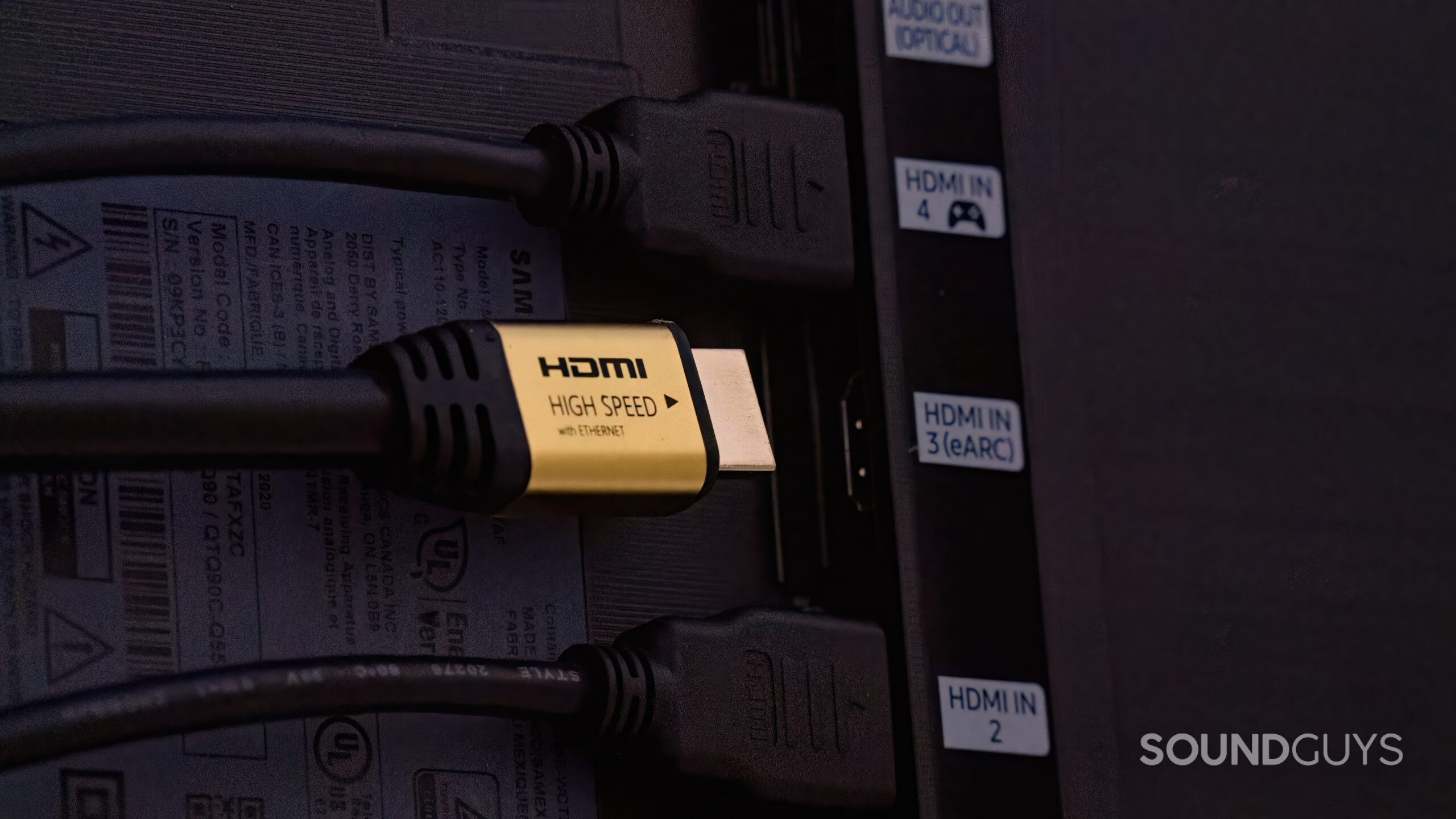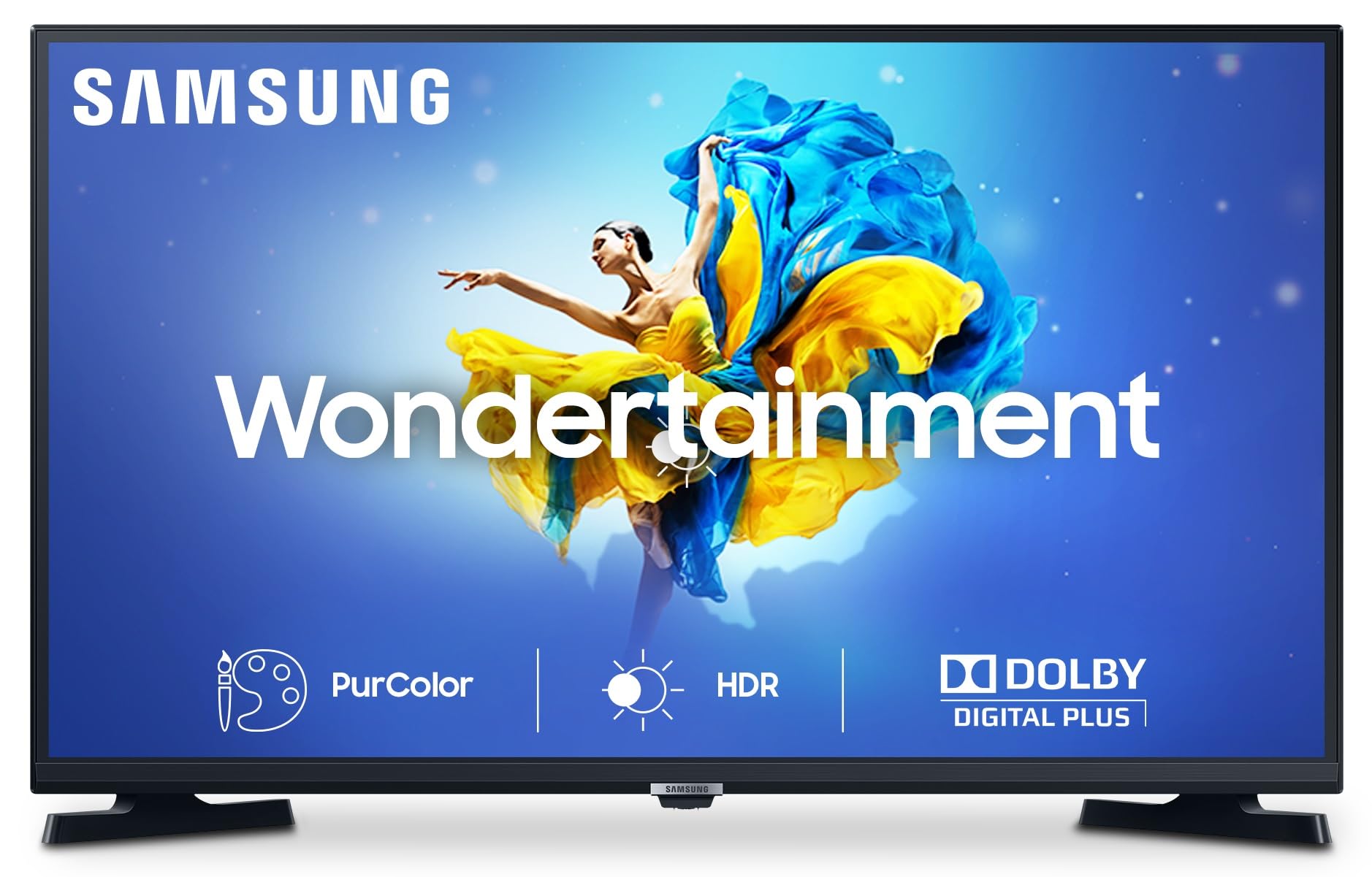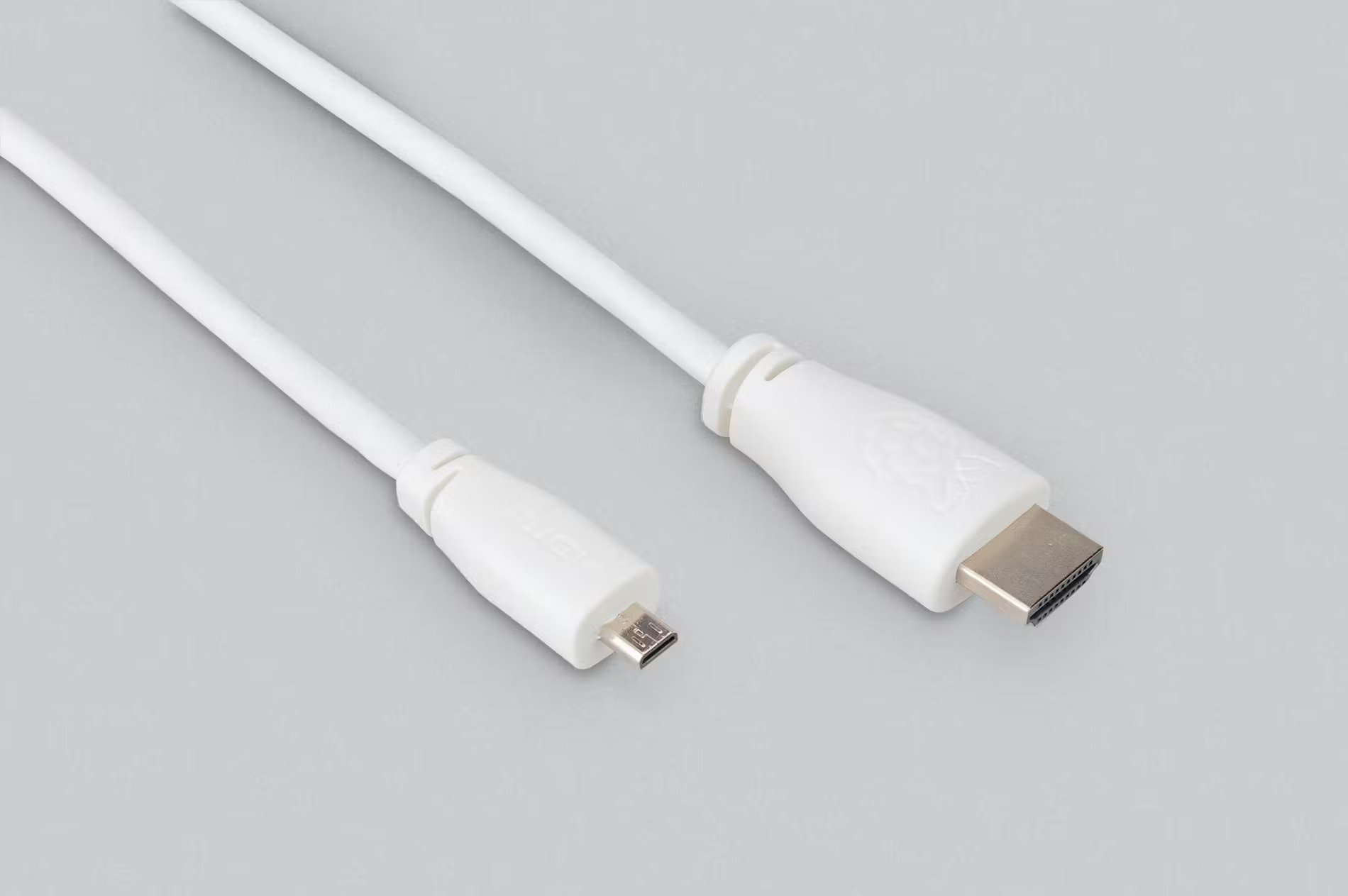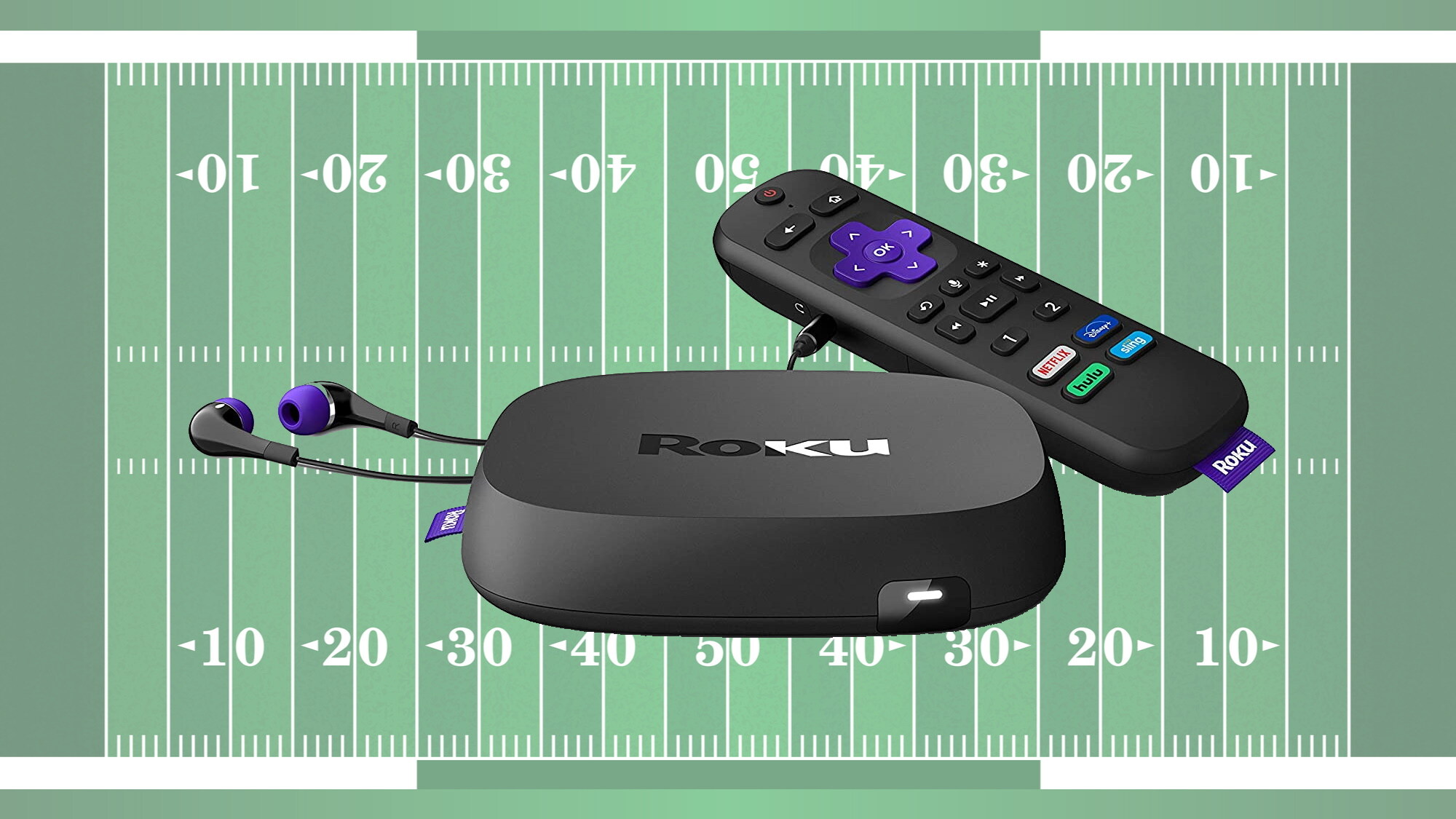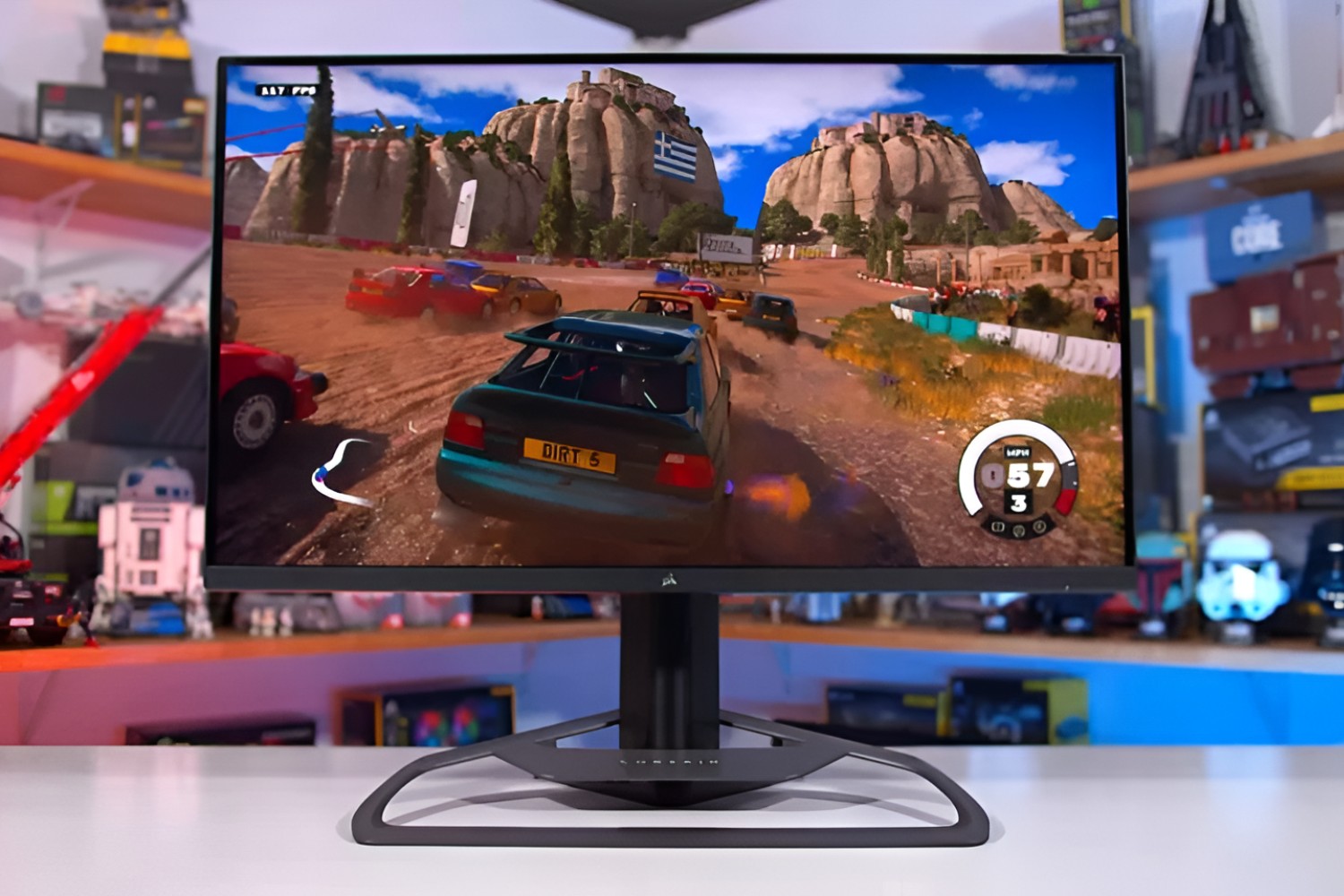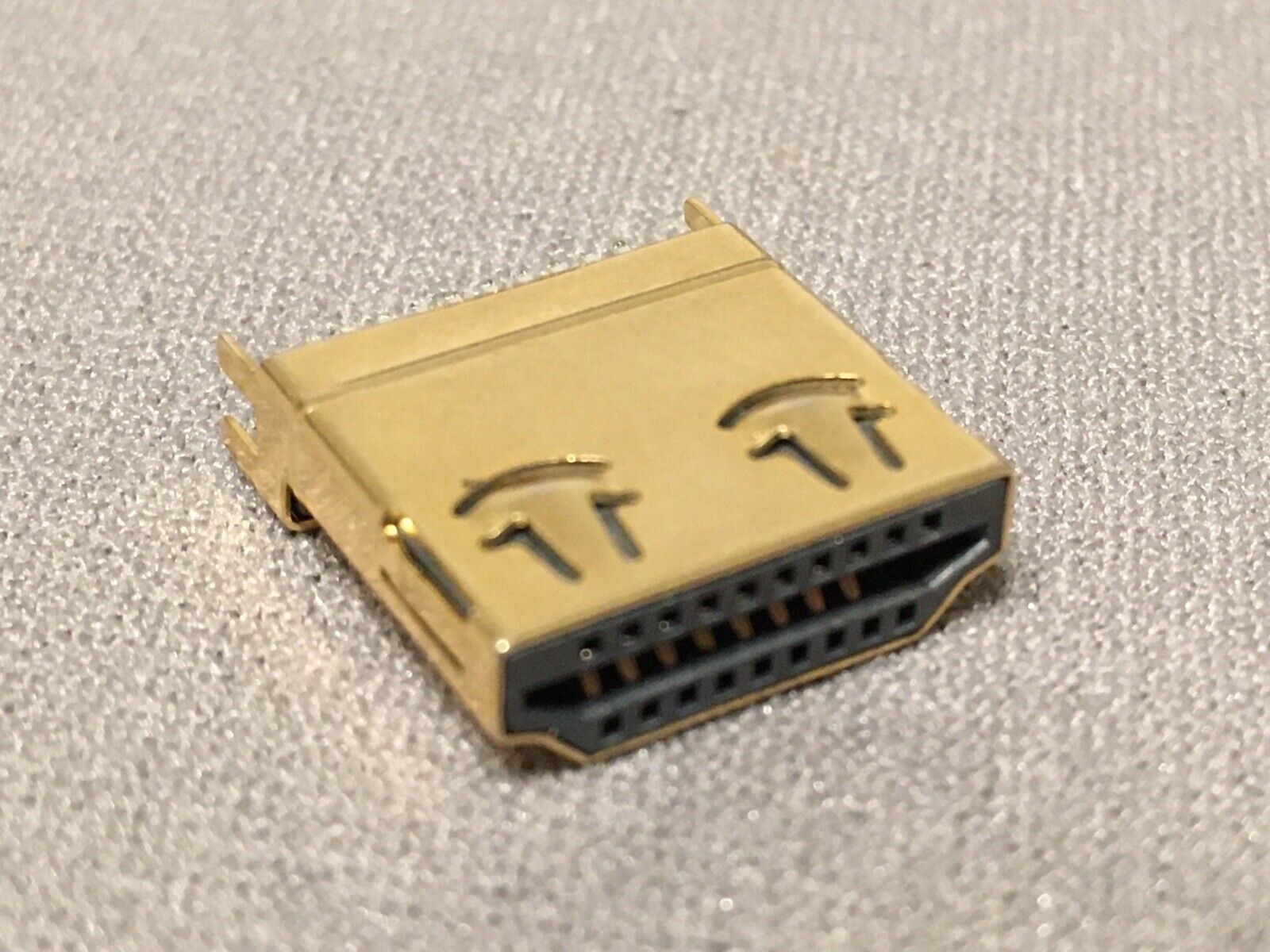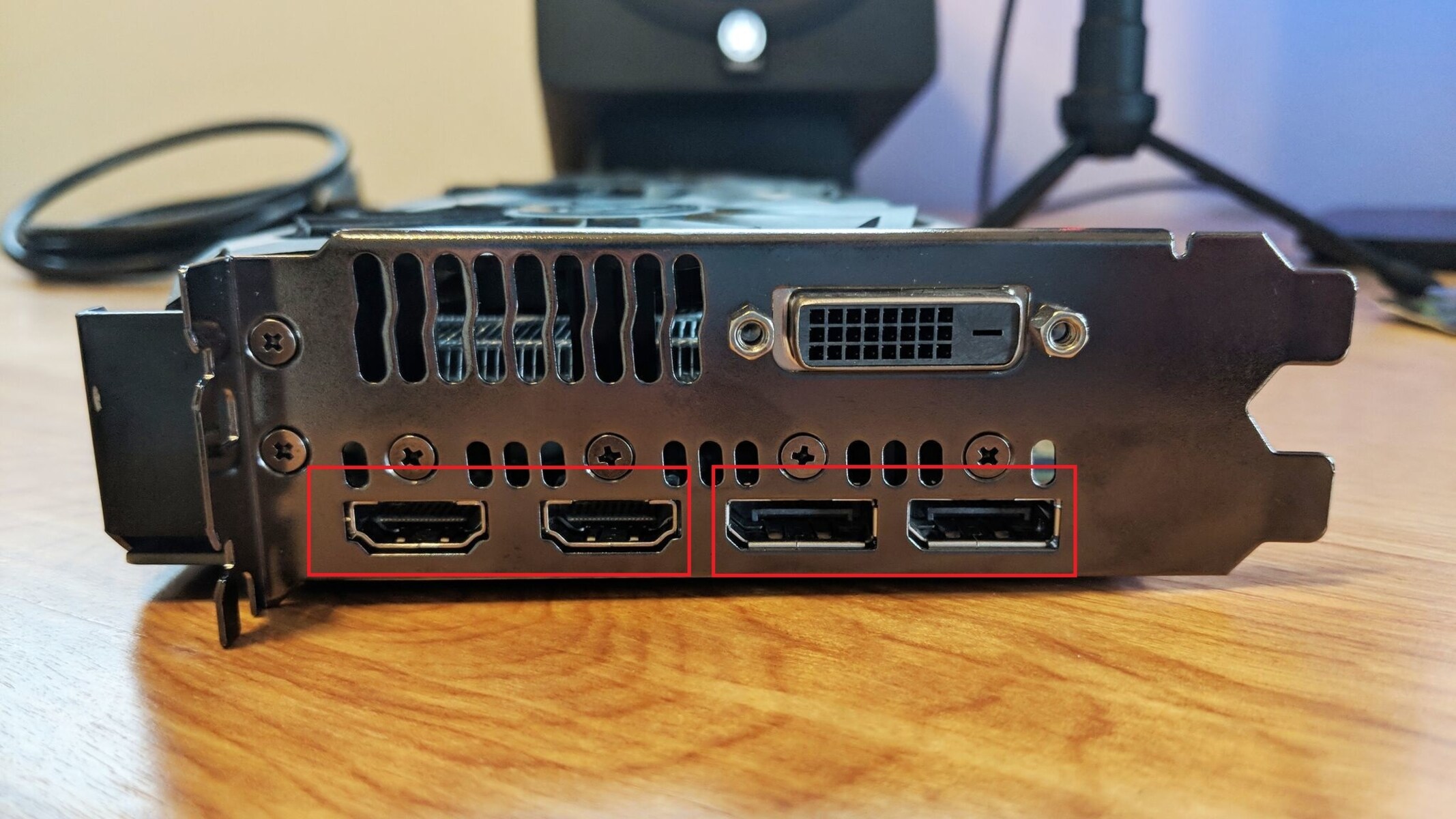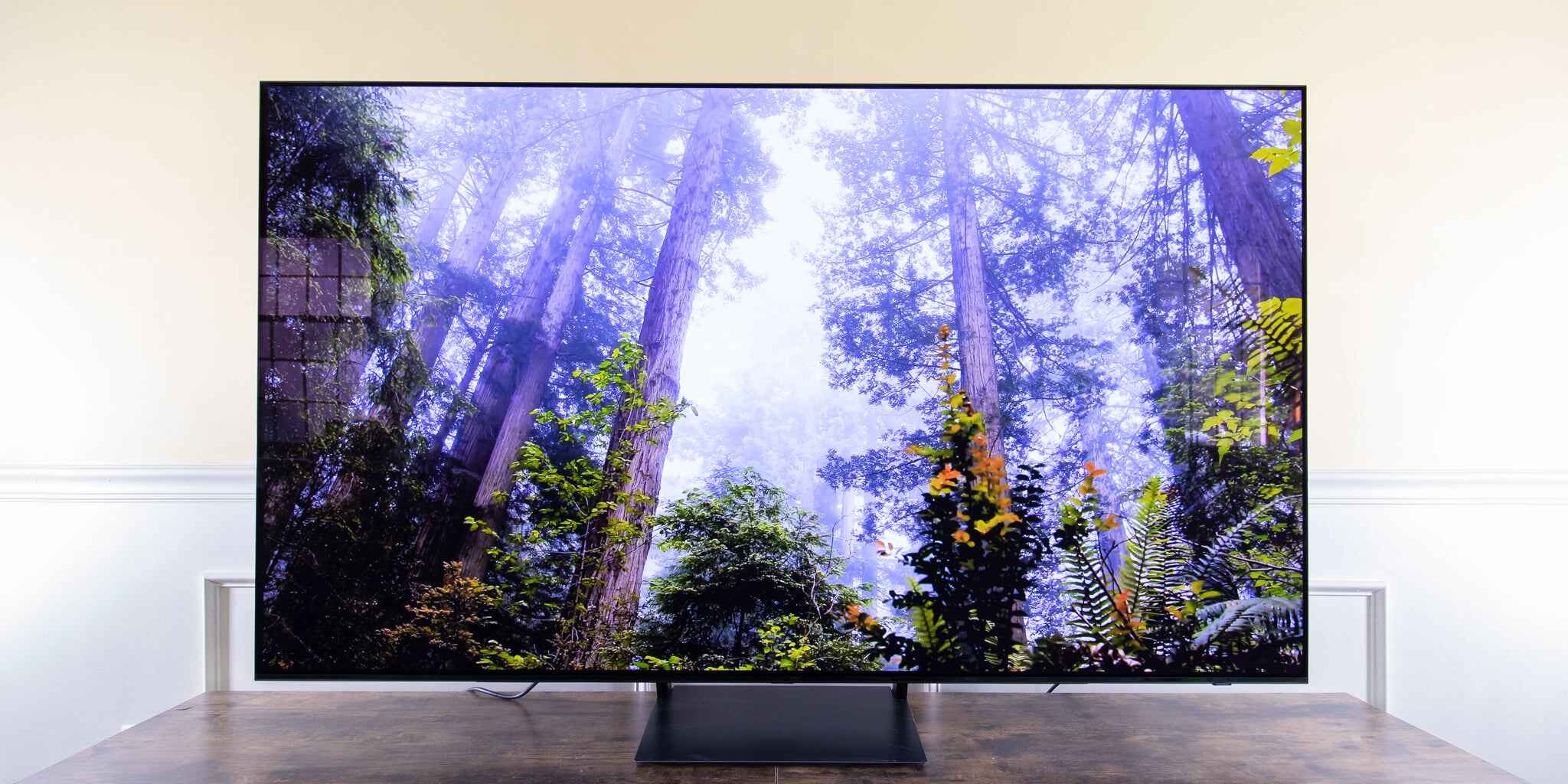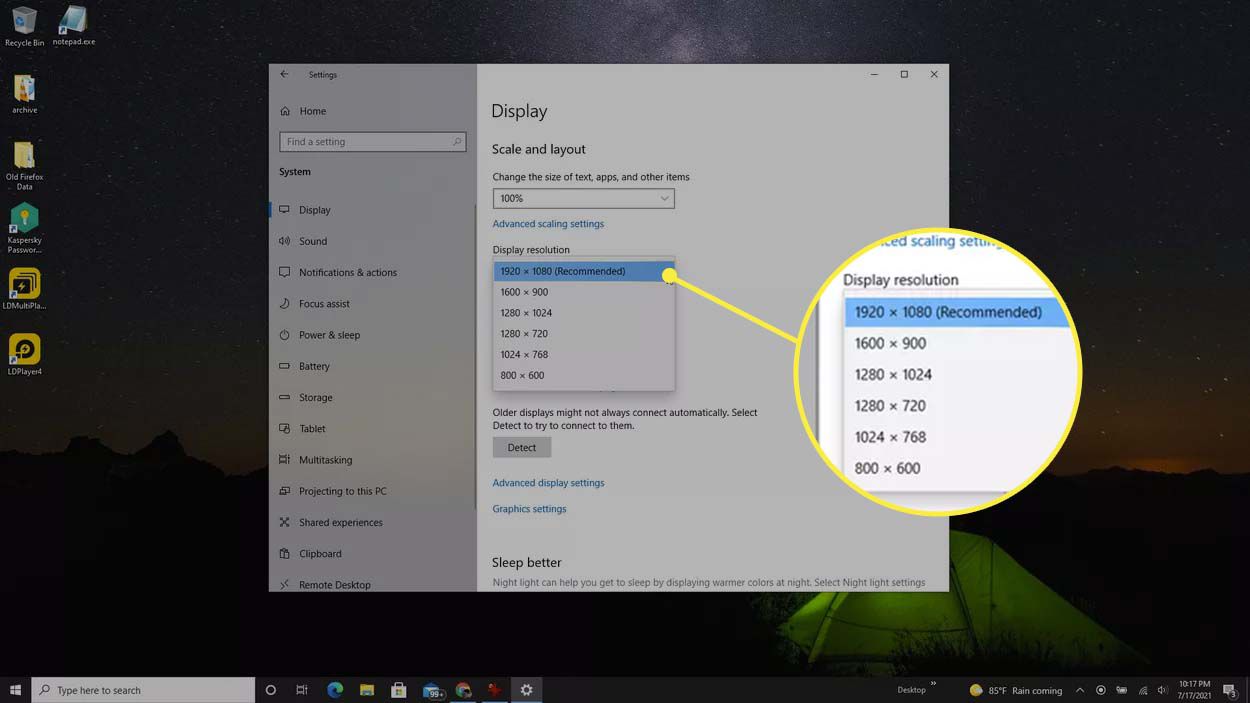Introduction
Welcome to the world of HDMI, a technology that revolutionized the way we connect and transmit audio and video signals. If you have ever connected a device, such as a DVD player or a gaming console, to your TV or monitor, chances are you have used an HDMI cable. But did you know that there are different types of HDMI ports, including a smaller one that serves a specific purpose?
HDMI, which stands for High-Definition Multimedia Interface, is a digital interface that allows for the transmission of high-quality audio and video signals between devices. It was first introduced in 2003 and has since become the industry standard for home entertainment systems, gaming consoles, computers, and other devices.
The beauty of HDMI lies in its ability to transmit both audio and video signals in a single cable, eliminating the need for multiple cables and connections. This not only simplifies the setup process but also ensures a high-quality, digital signal transfer, resulting in sharp picture quality and immersive sound.
Now that we understand the basics of HDMI, let’s delve into the different types of HDMI ports and explore the smaller HDMI port, which serves a specific purpose in certain devices.
Explaining HDMI
HDMI, or High-Definition Multimedia Interface, is a widely used digital audio and video interface that revolutionized the way we connect and enjoy high-definition content. HDMI allows for the seamless transmission of uncompressed audio and video signals between devices, ensuring the highest quality viewing and listening experience.
One of the key advantages of HDMI is its ability to support high-definition resolutions, such as 1080p and even 4K Ultra HD. This means that with an HDMI connection, you can enjoy crystal-clear visuals and vibrant colors on your TV or monitor.
Moreover, HDMI supports a variety of audio formats, including Dolby TrueHD and DTS-HD Master Audio, which deliver immersive, theatre-like sound. Whether you’re watching a movie, playing a video game, or listening to music, HDMI ensures that you get the best audio experience possible.
When it comes to connectivity, HDMI offers a straightforward solution. With a single HDMI cable, you can connect devices such as Blu-ray players, gaming consoles, set-top boxes, and computers to your TV or monitor. This eliminates the need for multiple cables and makes setup a breeze.
Furthermore, HDMI supports various advanced features, such as HDMI-CEC (Consumer Electronics Control), which allows for the control of multiple devices using a single remote control. This means that you can control your TV, DVD player, and soundbar simultaneously with just one remote.
HDMI also supports ARC (Audio Return Channel), which enables audio to be sent from your TV back to your soundbar or AV receiver, eliminating the need for a separate audio cable. This simplifies the setup and provides a neat and clean entertainment system.
With its wide range of capabilities and ease of use, HDMI has become the standard interface for connecting audiovisual devices in homes and entertainment venues across the globe.
Now that we have a clear understanding of HDMI, let’s explore the different types of HDMI ports and their uses in more detail.
The Different Types of HDMI Ports
While HDMI is a standardized technology, there are different types of HDMI ports that you may come across. These different port types have evolved over time to keep up with advances in technology and accommodate different device requirements.
The most common types of HDMI ports are:
- Standard HDMI: This is the most basic type of HDMI port and is found on many older devices. It supports video resolutions up to 1080p and can transmit audio signals up to 8 channels, making it suitable for most home entertainment setups.
- Mini HDMI: As the name suggests, mini HDMI ports are smaller than standard HDMI ports. They were mainly used in smaller devices such as cameras and camcorders. Mini HDMI ports support the same video and audio capabilities as standard HDMI ports.
- Micro HDMI: Micro HDMI ports are even smaller than mini HDMI ports and were primarily used in smartphones and tablets. They have the same capabilities as standard HDMI ports but require an adapter or a special micro HDMI to HDMI cable to connect to standard HDMI devices.
- HDMI Type D (Micro HDMI) – HDMI Type C (Mini HDMI) – HDMI Type A (Standard HDMI)
It’s important to note that while there are different types of HDMI ports, they are all compatible with one another. This means that you can use an adapter or a specific HDMI cable to connect devices with different port types.
When choosing an HDMI cable, it’s essential to consider the requirements of your devices and the desired capabilities. For example, if you have a 4K Ultra HD TV and a compatible Blu-ray player, you’ll need an HDMI cable that supports 4K resolution and provides sufficient bandwidth for high-quality audio transmission.
Now that you’re familiar with the different types of HDMI ports, let’s move on to exploring the smaller HDMI port in more detail.
The Smaller HDMI Port
Among the various types of HDMI ports, one specific type stands out for its smaller size and specialized use. This smaller HDMI port, also known as a Mini HDMI or Micro HDMI port depending on the device, is designed to accommodate compact electronics such as cameras, camcorders, smartphones, and tablets.
The smaller HDMI port offers the same capabilities as its standard-sized counterpart, allowing for the transmission of high-quality audio and video signals. However, its reduced size makes it a convenient option for portable devices with limited space.
Mini HDMI and Micro HDMI ports are often found on devices that prioritize portability and convenience, such as digital cameras and smartphones. These smaller ports allow users to easily connect their devices to larger screens, such as TVs or monitors, and enjoy their photos, videos, or presentations on a larger scale.
Despite their smaller size, Mini HDMI and Micro HDMI ports deliver excellent audio and video quality. They can support high-definition resolutions, including 1080p and even 4K Ultra HD, ensuring that users can enjoy their content with vibrant colors and sharp details.
It’s important to note that while Mini HDMI and Micro HDMI ports are smaller, they are compatible with standard HDMI devices. However, to connect a device with a smaller HDMI port to a standard HDMI port, you will need an adapter or a specific cable. For example, a Mini HDMI to HDMI adapter allows you to connect a camera with a Mini HDMI port to a TV with a standard HDMI port.
Overall, the smaller HDMI port provides a convenient solution for connecting portable devices to larger screens without compromising on audio and video quality. It allows users to enjoy their multimedia content on a bigger scale, making it an essential feature for those who frequently use cameras, smartphones, or tablets for media consumption or presentations.
Now that we have explored the smaller HDMI port in detail, let’s uncover what this port is called.
What Is the Smaller HDMI Port Called?
The smaller HDMI port, which is commonly found on portable devices like cameras, smartphones, and tablets, goes by different names depending on its size and device compatibility.
If the port is smaller and resembles a smaller version of the standard HDMI port, it is usually referred to as a Mini HDMI port. Mini HDMI ports are slightly larger than micro USB ports but smaller than standard HDMI ports. They have 19 pins and support the same audio and video capabilities as their larger counterparts.
On the other hand, if the port is even smaller and more compact, resembling a slightly elongated micro USB port, it is known as a Micro HDMI port. Micro HDMI ports are significantly smaller than both standard HDMI and Mini HDMI ports, but they maintain the same functionality, supporting high-quality audio and video signals.
The naming convention for these smaller HDMI ports is based on their respective sizes and the devices they are commonly found in. For instance, a digital camera or a camcorder is more likely to feature a Mini HDMI port, while a smartphone or a tablet may have a Micro HDMI port.
It’s important to note that while the smaller HDMI ports have different names, they are all compatible with each other and with standard HDMI ports. This means that with the right adapter or cable, you can connect a device with a Mini HDMI or Micro HDMI port to a device with a standard HDMI port.
So, if you’re looking to connect your camera, smartphone, or tablet to a larger screen or a TV, you’ll need a cable or adapter that supports the specific smaller HDMI port your device has.
In summary, the smaller HDMI port is called a Mini HDMI or Micro HDMI port, depending on its size and the device it is found in. These smaller ports offer the same audio and video capabilities as standard HDMI ports and allow for convenient connectivity between portable devices and larger screens.
Common Uses for the Smaller HDMI Port
The smaller HDMI port, whether it is a Mini HDMI or Micro HDMI port, serves several common use cases due to its compatibility with portable devices. Let’s explore some of the most common uses for these smaller HDMI ports:
- Connecting Cameras and Camcorders to TVs or Monitors: Many digital cameras and camcorders are equipped with Mini HDMI ports. These ports allow photographers and videographers to connect their devices directly to a TV or monitor and display their photos and videos on a larger screen. This makes it easier to review and share their captured memories with others.
- Sharing Mobile Device Content: Smartphones and tablets with Micro HDMI ports enable users to share content from their mobile devices on a larger display. Whether it’s showing off photos, videos, or presentations, the smaller HDMI port allows for a seamless connection between the mobile device and a TV or monitor. This is especially useful when giving presentations or sharing media in a professional or educational setting.
- Gaming on a Big Screen: Many portable gaming devices, such as handheld consoles or gaming smartphones, feature smaller HDMI ports. These ports allow gamers to connect their devices to a larger screen, such as a TV or monitor, for a more immersive gaming experience. By utilizing the smaller HDMI port, gamers can enjoy their games on a larger display without sacrificing audio and video quality.
- Mobile Device Productivity: Some tablets or laptops with smaller HDMI ports offer the ability to connect to external displays, such as projectors or monitors, to enhance productivity. By utilizing the smaller HDMI port, users can extend their device’s display onto a larger screen, making it easier for collaboration, multitasking, or delivering presentations.
- Portable Media Streaming: Mini HDMI and Micro HDMI ports can also be found on portable media players and streaming devices. These ports allow users to connect their devices to TVs or monitors and stream their favorite movies, TV shows, or online content on a larger screen. This provides a more enjoyable and immersive viewing experience.
These are just a few examples of the common uses for the smaller HDMI port. The versatility of these ports allows users to expand their device’s capabilities, share content, and enjoy a higher quality audiovisual experience on larger screens.
Now that we have explored the common uses for the smaller HDMI port, let’s discuss the advantages it brings to the table.
Advantages of the Smaller HDMI Port
The smaller HDMI port, whether it is a Mini HDMI or Micro HDMI port, offers several advantages that make it a valuable feature for portable devices. Let’s explore some of the key advantages of these smaller HDMI ports:
- Portability: The primary advantage of the smaller HDMI port is its compact size. Being smaller than standard HDMI ports, Mini HDMI and Micro HDMI ports are ideal for devices with limited space, such as cameras, smartphones, and tablets. Their smaller form factor allows for more streamlined designs without compromising on audio and video capability.
- Convenience: Smaller HDMI ports provide a convenient way to connect portable devices to larger screens. Whether it’s viewing photos, videos, presentations, or playing games, users can easily connect their devices to a TV or monitor using the smaller HDMI port. This eliminates the need for additional adapters or complex setup procedures.
- Compatibility: Despite their smaller size, Mini HDMI and Micro HDMI ports are fully compatible with standard HDMI devices. This means that users can connect their devices with smaller HDMI ports to TVs, monitors, or other devices with standard HDMI ports using adapters or specific HDMI cables. This compatibility ensures seamless connectivity and flexibility.
- High-Quality Audio and Video: The smaller HDMI port does not compromise on audio and video quality. It supports the same capabilities as standard HDMI ports, allowing for the transmission of high-definition resolutions and high-quality audio formats. Users can enjoy sharp, vibrant visuals and immersive sound when connecting their devices to larger screens.
- Enhanced Media Sharing: With smaller HDMI ports, users can easily share their photos, videos, and presentations from portable devices on bigger screens. This is particularly useful for photographers, videographers, business professionals, and educators who want to showcase their work, deliver presentations, or collaborate with others in a larger display setting.
These advantages make the smaller HDMI port a valuable feature for portable devices, offering convenience, compatibility, and high-quality audio and video transmission. Whether it’s for entertainment, productivity, or sharing media, the smaller HDMI port enhances the overall user experience and expands the capabilities of portable devices.
Now that we have explored the advantages of the smaller HDMI port, let’s discuss any potential disadvantages that it may have.
Disadvantages of the Smaller HDMI Port
While the smaller HDMI port, such as Mini HDMI or Micro HDMI, has several advantages, it also comes with a few limitations. Let’s take a look at some of the potential disadvantages of these smaller HDMI ports:
- Need for Adapters or Specific Cables: One of the main disadvantages of the smaller HDMI port is the need for adapters or specific cables to connect to devices with standard HDMI ports. This can add an extra step and cost to the setup process, especially when connecting devices with different port types. It’s important to have the appropriate adapters or cables on hand to ensure compatibility.
- Fragility: Due to their smaller size, Mini HDMI and Micro HDMI ports can be more fragile than standard HDMI ports. The smaller connectors are more susceptible to bending or breakage if excessive force is applied. Users need to handle the devices and cables with care to avoid damaging the ports, which could affect connectivity or result in costly repairs.
- Limited Usage Scenarios: The smaller HDMI ports are primarily found on portable devices, which means their usage scenarios may be limited compared to devices with standard HDMI ports. While they are suitable for sharing content on larger screens or connecting to external displays, the smaller HDMI ports may not be ideal for complex audio configurations or connecting to a wide range of home theater equipment.
- Not as Widely Supported: Some older or more specialized devices may not have support for the smaller HDMI ports, especially if they were designed before Mini HDMI or Micro HDMI became prevalent. This lack of support can limit the compatibility with certain devices or require additional adapters or converters to establish the connection.
While these disadvantages should be taken into consideration, it’s worth noting that the smaller HDMI ports still offer significant advantages in terms of portability, convenience, and compatibility with portable devices. As technology advances, manufacturers continue to improve the design and durability of these smaller ports to mitigate some of the drawbacks mentioned.
Now that we have discussed the potential disadvantages of the smaller HDMI port, let’s explore the compatibility and cable options available for these ports.
Compatibility and Cables for the Smaller HDMI Port
The smaller HDMI ports, such as Mini HDMI and Micro HDMI, offer compatibility with a wide range of devices and display systems. Despite their smaller size, these ports are designed to work seamlessly with standard HDMI devices using adapters or specific HDMI cables.
Compatibility is a crucial factor when using the smaller HDMI port. While the smaller HDMI ports are not as commonly found as standard HDMI ports, they can still be connected to TVs, monitors, projectors, and other devices with standard HDMI ports. This is achieved through the use of adapters or cables that bridge the gap between the different port sizes.
To connect a device with a smaller HDMI port to a device with a standard HDMI port, you will need one of the following:
- Mini HDMI to HDMI Adapter or Cable: If your device has a Mini HDMI port, you can use a Mini HDMI to HDMI adapter or cable. This adapter will plug into the Mini HDMI port and provide a standard HDMI female port, allowing you to connect a standard HDMI cable.
- Micro HDMI to HDMI Adapter or Cable: For devices with a Micro HDMI port, you will need a Micro HDMI to HDMI adapter or cable. This adapter or cable converts the smaller port to a standard HDMI port, allowing for easy connection to devices with standard HDMI ports.
- Specific Mini HDMI or Micro HDMI to HDMI Cable: Some cables are specifically designed to have a Mini HDMI or Micro HDMI connector on one end and a standard HDMI connector on the other. These cables eliminate the need for separate adapters and provide a direct connection between devices with different port types.
It is important to choose high-quality adapters or cables that are designed specifically for Mini HDMI or Micro HDMI connections. This will ensure reliable data transmission and minimize signal loss or degradation.
When selecting HDMI cables for the smaller HDMI ports, it’s essential to consider the specific requirements of your devices and the desired capabilities. For example, if you have a camera that supports 4K video recording, you will need a Mini HDMI to HDMI cable that can handle the bandwidth and resolution necessary for 4K content.
By utilizing the appropriate adapters or cables, you can easily connect devices with smaller HDMI ports to devices with standard HDMI ports, ensuring compatibility and seamless audiovisual transmission.
Now that we have explored the compatibility and cable options for the smaller HDMI port, let’s move on to the concluding section of our discussion.
Conclusion
In conclusion, HDMI has transformed the way we connect and enjoy audio and video content in the digital age. The technology offers a seamless, high-quality transmission of signals between devices, providing an immersive audiovisual experience and simplifying connectivity.
Within the realm of HDMI, we explored the different types of HDMI ports, including the smaller HDMI port. This smaller port, known as Mini HDMI or Micro HDMI, is designed for portable devices like cameras, smartphones, and tablets. Despite its smaller size, it offers the same capabilities as standard HDMI ports, allowing for the transmission of high-quality audio and video signals.
We discussed the common uses for the smaller HDMI port, which range from connecting cameras and smartphones to TVs or monitors, to sharing content and gaming on a larger screen. The smaller HDMI port expands the capabilities of portable devices, providing convenience and enhancing the user experience in various scenarios.
We also explored the advantages of the smaller HDMI port, such as its portability, convenience, compatibility, and high-quality audiovisual output. However, we acknowledged that these smaller ports come with certain limitations, including the need for adapters, fragility, and limited usage scenarios.
To ensure compatibility between devices with different HDMI port sizes, we discussed the availability of adapters and specific cables. These allow for seamless connections between devices with the smaller HDMI port and devices with standard HDMI ports, ensuring a reliable transmission of audio and video signals.
In conclusion, the smaller HDMI port, whether it is a Mini HDMI or Micro HDMI port, offers a valuable feature for portable devices, allowing for easy connectivity to larger screens and expanding the possibilities of media sharing and content consumption. While there are some limitations to consider, the advantages of the smaller HDMI port make it an important technology for enhancing the versatility and convenience of portable devices in our interconnected world.







